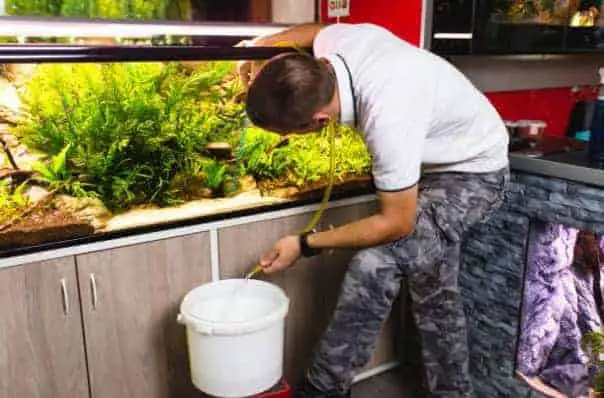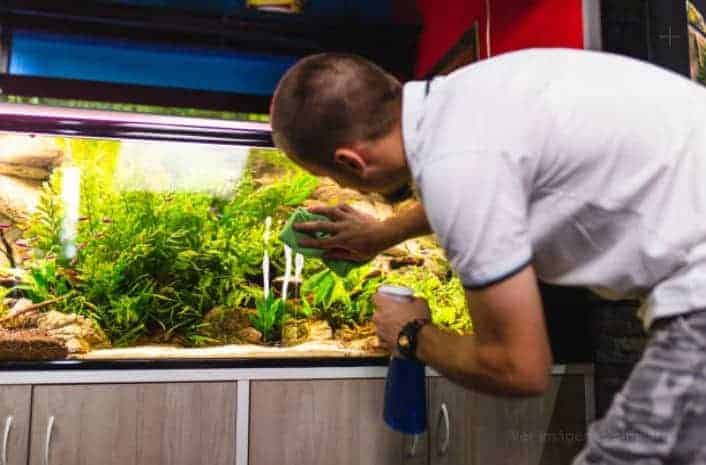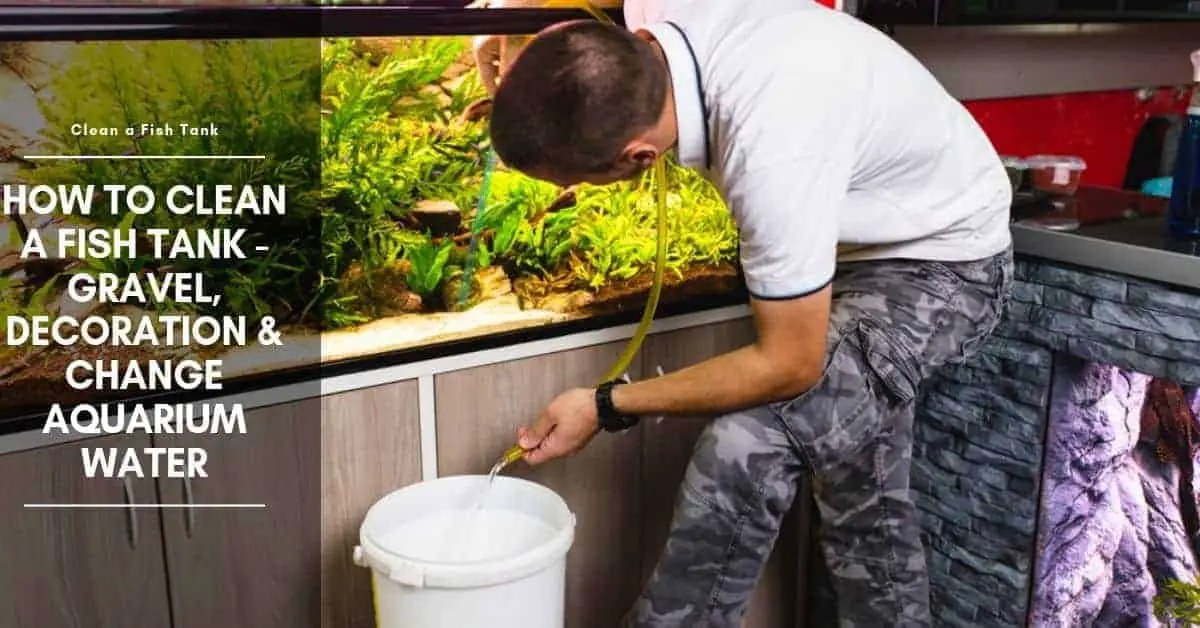In this article, I will explain how to clean a fish tank.
Cleaning your fish tank is very important because like every living thing, fishes release wastes which when accumulated increases bioload, making the water toxic for the fishes. Thus, if your fishes must stay healthy, you must pay special attention to the cleaning of their home and do it at the right time, with the right tools and in the right way.

What is the right way to clean a fish tank?
The first step to getting it right is frequency. How often should you clean your fish tank? As often as a partial change of 10 to 20% of the water every 2 to 3 weeks for freshwater and 10% every week for saltwater.
This is dependent on the size of the tank and the number of fishes in it. If done correctly, this will help prevent a full water change. A full water change removes all the useful bacteria required to break down wastes created by the fish.
You can read on self cleaning fish tank here.
The second step to answering the question of how to clean a fish tank is the supplies for carrying out the cleaning. To properly and effectively clean your fish tank, you need the following supplies:

Freshwater:
– Water in the quantity required to make the replacement.
– Algae pad.
– A large bucket (larger than 5 gallons or 10 liters) for this purpose alone.
– A siphon-type gravel vacuum.
– Filter media – sponges, cartridges, carbon packets.
API STRESS COAT Aquarium Water Conditioner 16-Ounce Bottle
29% OffAPI STRESS ZYME Freshwater and Saltwater Aquarium Cleaning Solution 1-Ounce Bottle
13% OffAPI ACCU-CLEAR Freshwater Aquarium Water Clarifier 4-Ounce Bottle
18% Off– Vinegar-based solution or Aquarium-safe glass cleaner.
– Bleach solution in a different container.
– Metal or plastic razor blade (be careful with acrylic tanks, as they scratch easier).
For Saltwater you need also:
– Salt mix.
– Hygrometer
– pH strips.
– A refractometer
– A thermometer.
Cleaning a fish tank
Once you have gotten all your supplies, you are ready to start cleaning. The fact that the supplies for cleaning a freshwater fish tank differ slightly from supplies used for cleaning a saltwater fish tank, is an indication that the steps will also differ slightly. Let’s get started.

Cleaning a freshwater fish tank
Step 1 – Get rid of the algae.
Algae grow very fast on the insides of the tank walls and your first task is to remove them. To do this, use the algae pad to clean the inside wall of the tank. Scrub where necessary, if you experience any particularly difficult spot, use a razor or plastic blade to scrape it off gently from the tank.
Tips:
I. Use hand gloves to do the job, but be sure the gloves haven’t been treated with any chemical.
II. Don’t improvise with your kitchen sponge, use only algae pad.
III. You can wait to do this step after you have removed 10 to 20% of the water you hope to replace.
Step 2 – Remove the old water
Before you begin cleaning, you should already be sure how much water you want to remove. 10 to 20% on a regular basis is fine, but if you have a sick fish, 25 to 50% removal will do.
Start by siphoning the old water into the bucket dedicated for this purpose. Remember that this bucket to get a new bucket for this particular purpose only.
Step 3 – Gravel cleaning
To do this, using the vacuum, push through the gravel to suck out the waste,excessive food, and debris in the gravel. To prevent the vacuum from sucking out any small or delicate fish you may have, use a sock (that has never been worn) at the end of the siphon, but be sure that the mesh is large enough for the debris being sucked out.
Step 4 – Decoration cleaning
Algae also grow on tank decorations, so they need cleaning. Using the algae pad,clean the decorations in the water you siphoned out. Do not use soap or any chemical or soap for this purpose, as it will harm the fish (es).
Step 5 – Replace the freshwater
Its time to replace the old water you siphoned out with clean fresh water. Be conscious of the temperature of the water, as this is very vital to the health of the fish (es). To be sure, use a thermometer to monitor the temperature and be sure it is within the dictated temperature.
After you replace the water, you can consider adding aquarium salt for fresh water to prevent diseases and keep the fish healthy. Once this is done, watch the water for some hours to be sure the cloudiness dissipates.
Remember to leave space between the water level and the tank to allow for oxygen-carbon dioxide exchange for the fish as they breathe.
Step 6 – Clean the exterior of the tank
The exterior of the fish tank also needs cleaning. Clean it using aquarium-safe cleaners to wipe down the glass, tank top, light, and hood.
Step 7 – How to clean a fish tank filter?
Consider changing the filter cartridge monthly, as the carbon inside the cartridge can cause harm to the fish if left unchanged. You can rinse the cartridge during your weekly cleaning but do well to change at the end of the month.
Cleaning a saltwater fish tank
This is only slightly different from freshwater because it has some additional steps.
– After cleaning the decorations, before replacing the saltwater, clean the salty creep with an algae sponge. Salty creep is the crusty residue that forms after saltwater evaporates at the top of the tank.
– When replacing water back to the tank, it has to be a saltwater solution of the right salinity, pH and temperature.
Ultimately,to get it right on how to clean a fish tank, you have to be careful that no chemical gets into the tank as this is harmful to fishes and make sure the tank is cleaned as often as necessary.

Hi, my name is Sean, and I’m the primary writer on the site. I’m blogging mostly about freshwater and saltwater aquariums, fish, invertebrates, and plants. I’m experienced in the fishkeeping hobby for many years. Over the years I have kept many tanks, and have recently begun getting more serious in wanting to become a professional aquarist. All my knowledge comes from experience and reading forums and a lot of informative sites. In pursuit of becoming a professional, I also want to inspire as many people as I can to pick up this hobby and keep the public interest growing.
Read more about Sean.
Please join also my Facebook group.




















